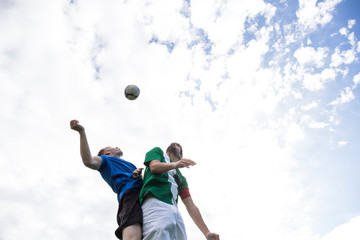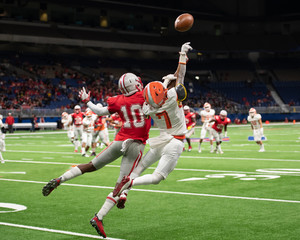Let’s face it, even if you’re not a football player, knowing how to handle some football tricks can mean a different world in your circle of friends. Improving your football tricks and skills is not just about impressing your friends and ladies. They can also improve your match performance, as they are surprising and effective.
I can give you many examples in that section: do you remember when Ronaldinho first started making the famous Elastico move? (Girl the ball with her outer foot to the left and then quickly cuts it with the inside) Right now, a defender who meets Ronaldinho in a one-on-one duel will definitely be careful with this move, but when the Brazilian has just discovered. It was such a shock and he managed to wreak havoc every time Elastico was at work.
Simple soccer tricks for beginners
I’m not saying you will be able to perform as well as Ronaldinho when you learn football tricks like that, but it can definitely give you a surprising advantage in a match situation.
Another good example of football tricks and skills that can make a difference is Zidane’s 360 spins. Although this was a very effective and simple move, it was only after Zizou popularized it that players around the world actually used it in matches.
So if you learn soccer tricks, you will be able to take the edge over your opponents, but it may not be that hard to figure out. The real question is how to do football tricks and how to learn them properly. This is what I suggest.
Try to go step by step as you learn football tricks and categorize them by difficulty. Start with the basics, move on to advanced features and once you get the two categories, try some special offers that are really hard to master.
Freestyle football tricks
Of course, if you train these movements yourself or with the help of a friend, you will be able to do them without or little resistance, which rarely happens in real matches (and if there is no resistance, why do you still perform them in matches?) . So apart from practicing the actual movements, you should also time your tricks and football skills.
Some of the basic moves can include: Zidane 360 spin, stop and go, Puska’s V-stroke or false dribble shot.
Under the advanced category you can try the Cruyff move, double transfer and transfer or Scotch.
Movements that are quite difficult to master and that are best left in the end, including: Elastico Ronaldinho, the “Brazilian” rainbow movement or the Van Persie sweep.
Start with the basics and practice them carefully until you feel that you have mastered this football trick. Of course, when you go to advanced moves, it takes longer to master strongly, but you have built up some basic ball control skills from basic dribbling.
Harder dribbles like Elastico or rainbow kicks take a while to master, but do not be discouraged if you continue to fail to perform them! With enough practice, there is no trick you can not tackle. The only thing that kills learning a certain trick is to say “I can not do this” and cut it off from your list.



